#bob ruggiero
Text
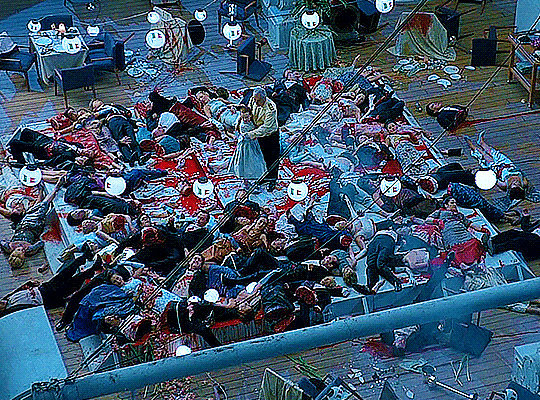
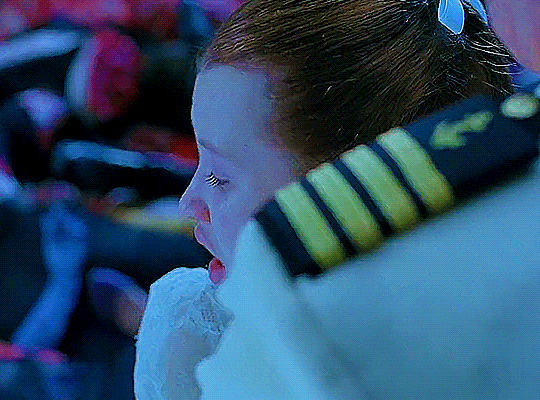

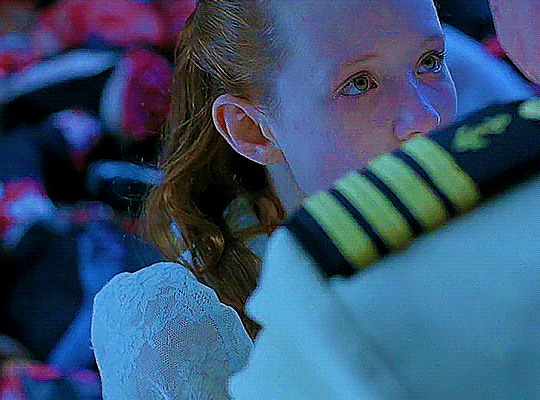

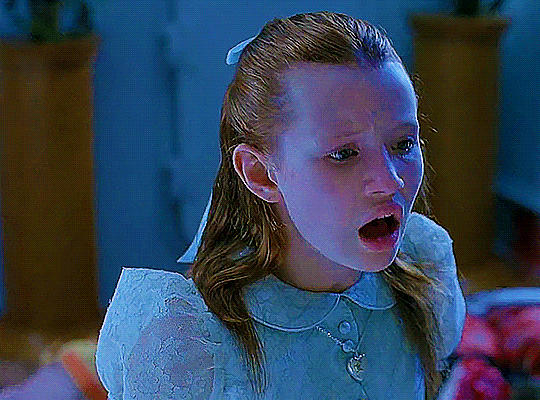
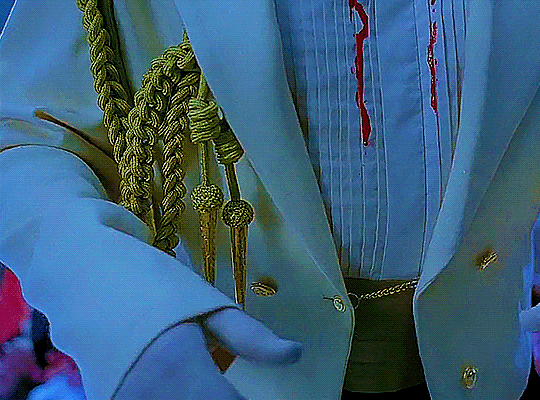


Ghost Ship (2002)
#ghost ship#horroredit#horroredits#movieedit#movieedits#filmedit#filmedits#emily browning#robert ruggiero#bob ruggiero#my gifs#edit
198 notes
·
View notes
Text
Bob Sinclar & Matia Bazar Ft. Antonella Ruggiero - Ti Sento
youtube

26 notes
·
View notes
Text
Guarda "Bob Sinclar & Matia Bazar Ft. Antonella Ruggiero - Ti Sento" su YouTube
youtube
Come valorizzare un successo storico! 🎧😍
2 notes
·
View notes
Text
Bob Sinclar & Matia Bazar Ft. Antonella Ruggiero - Ti Sento
youtube
❤️&💚
Due occhi invadenti.
E un un brivo lungo la schiena...
👑♠️🌹
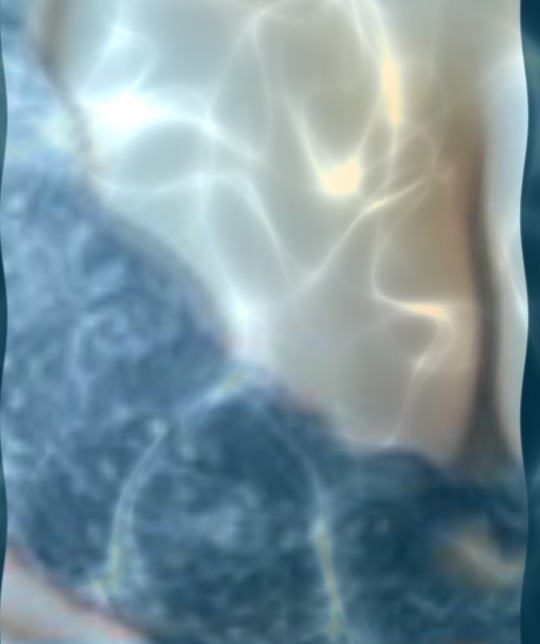
Ti sento...
0 notes
Text
Beatport Top 100 Downloads January 2024

DATE CREATED: 2024-01-01
Tracklist :
&ME, Black Coffee, Keinemusik - The Rapture Pt.III (Original Mix).mp3
Adriatique, Delhia De France - The Future Is Unknown (Original Mix).mp3
Adriatique, WhoMadeWho, RÜFÜS DU SOL - Miracle - RÜFÜS DU SOL Remix.mp3
Alex Stein - Hydra (Original Mix).mp3
Alex Wann - Milkshake (Original Mix).mp3
Andruss - Frikitona (Original Mix).mp3
Argy, Omnya - Aria (Extended Mix).mp3
Armin van Buuren, Trevor Guthrie - This Is What It Feels Like feat. Trevor Guthrie (Armin van Buuren 2023 Extended Remix).mp3
AYYBO - RIZZ (Extended Mix).mp3
BENNETT (DE) - Vois sur ton chemin (Extended Techno Mix).mp3
Benny di Gioia, Dj Cucky - Mercury Superstar (Original Mix).mp3
Bob Sinclar, Antonella Ruggiero, Matia Bazar - Ti Sento (Extended Mix).mp3
Borai & Denham Audio - Make Me (Franky Rizardo Extended Remix).mp3
Boys Noize, Skrillex - Fine Day Anthem (Extended Mix).mp3
Bush B4 Me - Say It Right (Extended Mix).mp3
Cajmere, Dajaé, Marco Lys - Brighter Days (
Read the full article
0 notes
Text
Beatport Top 100 Downloads January 2024

DATE CREATED: 2024-01-01
Tracklist :
&ME, Black Coffee, Keinemusik - The Rapture Pt.III (Original Mix).mp3
Adriatique, Delhia De France - The Future Is Unknown (Original Mix).mp3
Adriatique, WhoMadeWho, RÜFÜS DU SOL - Miracle - RÜFÜS DU SOL Remix.mp3
Alex Stein - Hydra (Original Mix).mp3
Alex Wann - Milkshake (Original Mix).mp3
Andruss - Frikitona (Original Mix).mp3
Argy, Omnya - Aria (Extended Mix).mp3
Armin van Buuren, Trevor Guthrie - This Is What It Feels Like feat. Trevor Guthrie (Armin van Buuren 2023 Extended Remix).mp3
AYYBO - RIZZ (Extended Mix).mp3
BENNETT (DE) - Vois sur ton chemin (Extended Techno Mix).mp3
Benny di Gioia, Dj Cucky - Mercury Superstar (Original Mix).mp3
Bob Sinclar, Antonella Ruggiero, Matia Bazar - Ti Sento (Extended Mix).mp3
Borai & Denham Audio - Make Me (Franky Rizardo Extended Remix).mp3
Boys Noize, Skrillex - Fine Day Anthem (Extended Mix).mp3
Bush B4 Me - Say It Right (Extended Mix).mp3
Cajmere, Dajaé, Marco Lys - Brighter Days (
Read the full article
0 notes
Text
Nostradamus future predictions pdf
NOSTRADAMUS FUTURE PREDICTIONS PDF >>Download
vk.cc/c7jKeU
NOSTRADAMUS FUTURE PREDICTIONS PDF >> Read Online
bit.do/fSmfG
ﺑـﺪأ اھـﺘﻤﺎم ﻧﻮﺳـﺘﺮاداﻣـﻮس ﺑﺘـﻮﻗﻊ. أﺣـﺪاث اﻟﻤﺴـﺘـﻘـﺒﻞ ﻓﻲ اﻟﻈـﮭـﻮر، ﻟﮭـﺬا ﺗـﺮك ﻣﮭـﻨـﺘﮫ اﻟﺴـﺎﺑﻘـﺔ وﺑـﺪأ. ﻋـﻤﻠﮫ ﻓﻲ ھـﺬا اﻟﻤﺠـﺎل. ﺣـﺘﻰ ﻗـﺎم ﺑﻨﺸـﺮ ﻛـﺘﺎﺑﮫ. 23/03/2022 — قم بتنزيل Daily Horoscope & Prediction واستمتع به على أجهزة iPhone و iPad Accurate zodiac signs future foretelling, personalized zodiac02/07/2018 — تنبؤات نوستراداموس book. Read reviews from world's largest community for readers. نوستراداموس أو ميشيل دي نوسترادام Michel de Nostredame 13/09/2022 — اكتشف الفيديوهات القصيرة المتعلقة بـ nostradamus predictions pdf على TikTok. استكشف أحدث الفيديوهات من علامات هاشتاج: #nostradamusprediction 15/09/2022 — اكتشف الفيديوهات القصيرة المتعلقة بـ nostradamus pdf على TikTok. This book is called Nostradamus the complete prophecies of the future Big data used to predict the future. Psychic Readings: I Asked 3 Psychics to Predict My Future . PDF] Predicting Deeper into the Future of Semantic . Download Book Quatrains Of Nostradamus PDF Extension: PDF Predictions Of Nostradamus; With An Analytical Islamic Study In History And The Future. Nostradamus, the greatest diviner and scryer who ever lived, was born on the 13th December 1503, in Provence, France. His prophecies have been in continuous With Orson Welles, Philip L. Clarke, Ray Laska, Bob Ruggiero. The story of Nostradamus and his predictions about the future. Nostradamus المدة ساعة و40 دقيقة .
, , , , .
1 note
·
View note
Text



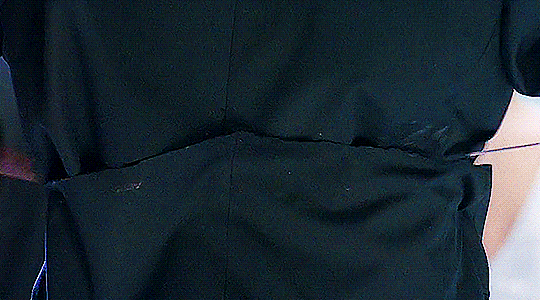
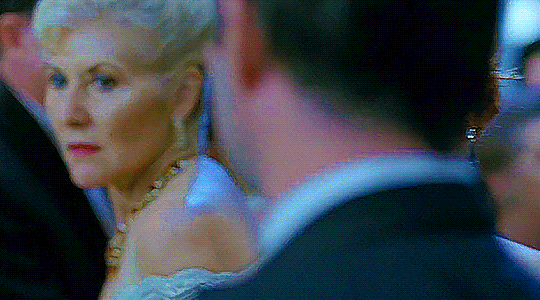

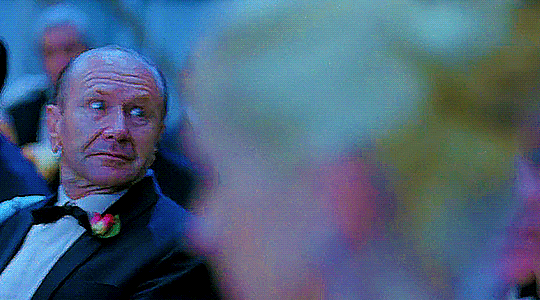





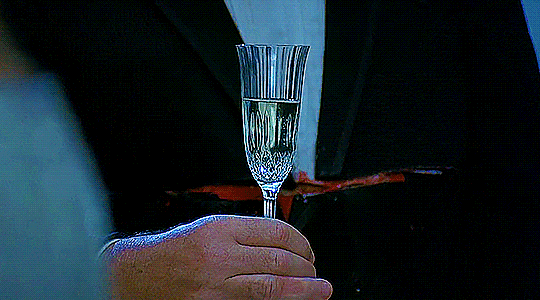

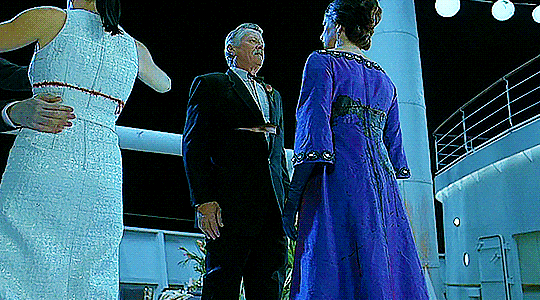
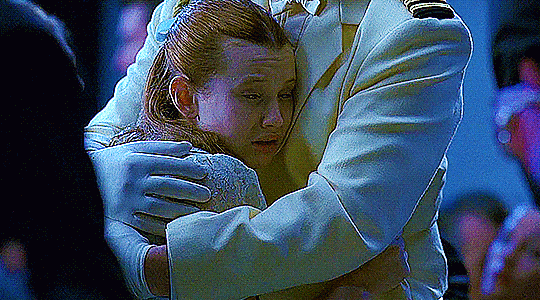
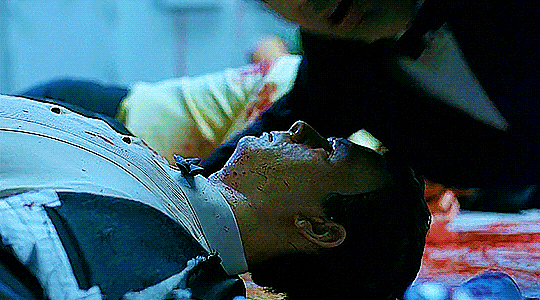

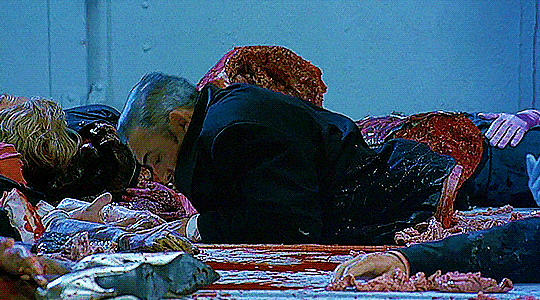


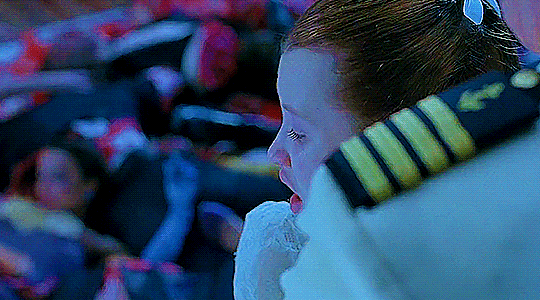
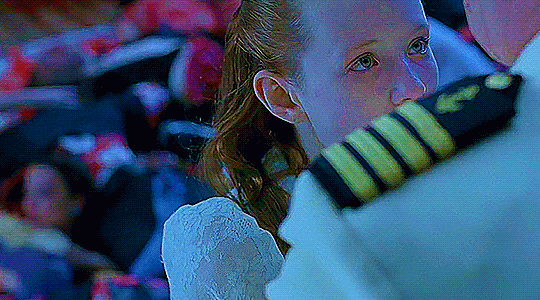

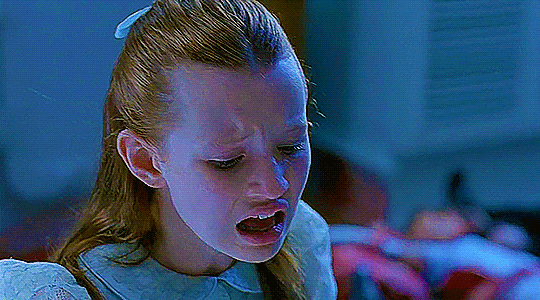
Ghost Ship (2002)
#ghost ship#horroredit#horroredits#movieedit#movieedits#filmedit#filmedits#emily browning#bob ruggiero#robert ruggiero#my gifs#edit
30 notes
·
View notes
Photo

#Stacey Farber#Degrassi#Drake#I'm Upset#Kevin Smith#Silent Bob#Lauren Collins#Jake Epstein#Adamo Ruggiero#Nina Dobrev#Shane Kippel
61 notes
·
View notes
Photo

Wilmer Alexander, Jr. and The Dukes - Give Me One More Chance (1968)
(AKA Wilmer and the Dukes)
Doug Brown
from: "Give Me One More Chance" / "Get It"
"In Dan's Garage #50 Upstate NY Vol. 1"
(2011 Compilation)
R&B | Soul
JukehostUK
(left click = play)
(320kbps)
Personnel:
Wilmer Alexander, Jr.: Vocals / Tenor Saxophone
Doug Brown: Guitar
Ralph "Duke" Gillotte: Hammond B-3 Organ
Bob Eagan: Bass
Vinnie Ruggiero: Drums
Gaspare Charles "Gap" Mangione: Keyboards
Horns:
Chuck Mangione: Trumpet
Sam Noto: Trumpet
Wilmer Alexander, Jr.: Tenor Saxophone
Larry Covelli: Tenor Saxophone
Dennis Good:: Trombone
Sonny Ausman: Trombone
Horn Arrangement by "Gap" Mangione
Produced by Wilmer Alexander, Jr / Doug Brown
Recorded:
@ Jerris Production Studio
in Rush, New York USA
Released in the Spring of 1968
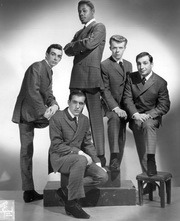
Wilmer and the Dukes
#Wilmer and the Dukes#Aphrodisiac Records#Wilmer Alexander Jr.#Wilmer Alexander Jr. and The Dukes#Give Me One More Chance#The Inferno#R&B#Soul#1960's#Doug Brown#Chuck Mangione#Gap Mangione#Buffalo#New York#Rush New York#Western New York
7 notes
·
View notes
Text
Rubin Carter

Rubin "Hurricane" Carter (May 6, 1937 – April 20, 2014) was an American-Canadian middleweight boxer who was wrongfully convicted of murder and later released following a petition of habeas corpus after serving almost 20 years in prison.
In 1966, police arrested Carter and acquaintance John Artis for a triple homicide committed at the Lafayette Bar and Grill in Paterson, New Jersey. Police stopped Carter's car and brought him and Artis, also in the car, to the scene of the crime. Carter and Artis were tried twice for the murders in 1967 and 1976 and convicted; both served time in Rahway State Prison. After the second conviction was overturned in 1985, prosecutors chose not to try the case for a third time.
Carter's autobiography, titled The Sixteenth Round, written while he was in prison, was published in 1975 by Warner Books. The story inspired the 1975 Bob Dylan song "Hurricane" and the 1999 film The Hurricane (with Denzel Washington playing Carter). From 1993 to 2005, Carter served as executive director of Innocence Canada (Formerly the Association in Defence of the Wrongly Convicted).
Early life
Carter was born in Clifton, New Jersey, the fourth of seven children. He acquired a criminal record and was sentenced to a juvenile reformatory for assault, having stabbed a man in self defense when he was 11. Carter escaped from the reformatory in 1954 and joined the United States Army. A few months after completing infantry basic training at Fort Jackson, South Carolina, he was sent to West Germany. While in Germany, Carter began to box for the Army. He was later discharged in 1956 as unfit for service, after four courts-martial. Shortly after his discharge, he was convicted of two muggings and sent to prison.
Boxing career
After his release from prison in September 1961, Carter became a professional boxer. At 5 ft 8 in (1.73 m), Carter was shorter than the average middleweight, but he fought all of his professional career at 155–160 lb (70–72.6 kg). His aggressive style and punching power (resulting in many early-round knockouts) drew attention, establishing him as a crowd favorite and earning him the nickname "Hurricane." After he defeated a number of middleweight contenders—such as Florentino Fernandez, Holley Mims, Gomeo Brennan, and George Benton—the boxing world took notice. The Ring first listed him as one of its "Top 10" middleweight contenders in July 1963. At the end of 1965, they ranked him as the number five middleweight.
He fought six times in 1963, winning four bouts and losing two. He remained ranked in the lower part of the top 10 until December 20, when he surprised the boxing world by flooring past and future world champion Emile Griffith twice in the first round and scoring a technical knockout. That win resulted in The Ring's ranking of Carter as the number three contender for Joey Giardello's world middleweight title. Carter won two more fights (one a decision over future heavyweight champion Jimmy Ellis) in 1964, before meeting Giardello in Philadelphia for a 15-round championship match on December 14. Carter landed a few solid rights to the head in the fourth that left Giardello staggering, but was unable to follow them up, and Giardello took control of the fight in the fifth round. The judges awarded Giardello a unanimous decision.
After that fight, Carter's ranking in The Ring began to decline. He fought nine times in 1965, winning five but losing three of four against contenders Luis Manuel Rodríguez, Dick Tiger, and Harry Scott. Tiger, in particular, floored Carter three times in their match. "It was", Carter said, "the worst beating that I took in my life—inside or outside the ring". During his visit to London (to fight Scott) Carter was involved in an incident in which a shot was fired in his hotel room.
Carter's career record in boxing was 27 wins, 12 losses, and one draw in 40 fights, with 19 total knockouts (8 KOs and 11 TKOs). He received an honorary championship title belt from the World Boxing Council in 1993 (as did Joey Giardello at the same banquet) and was later inducted into the New Jersey Boxing Hall of Fame.
Homicides
At approximately 2:30 a.m. on June 17, 1966, two men entered the Lafayette Bar and Grill at East 18th Street at Lafayette Street in Paterson, New Jersey, and began shooting. The bartender, James Oliver, and a customer, Fred Nauyoks, were killed immediately. A severely wounded customer, Hazel Tanis, died almost a month later, having been shot in the throat, stomach, intestine, spleen and left lung, and having had her arm shattered by shotgun pellets. A third customer, Willie Marins, survived the attack, despite a gunshot wound to the head that cost him the sight in one eye. During questioning, both Marins and Tanis told police that the shooters had been black males, though neither identified Carter or John Artis.Petty criminal Alfred Bello, who had been near the Lafayette that night to burgle a factory, was an eyewitness. Bello later testified that he was approaching the Lafayette when two black males—one carrying a shotgun, the other a pistol—came around the corner walking towards him. He ran from them, and they got into a white car that was double-parked near the Lafayette.
Bello was one of the first people on the scene of the shootings, as was Patricia (Patty) Valentine, a resident on the second floor (above the Lafayette Bar and Grill). Valentine told the police that she saw two black males get into a white car and drive off. Another neighbor, Ronald Ruggiero, also heard the shots, and said that, from his window, he saw Alfred Bello running west on Lafayette Street toward 16th Street. He then heard the screech of tires and saw a white car shoot past, heading west, with two black males in the front seat.Both Bello and Valentine gave police a description of the car that was the same. Valentine's testimony, in which she initially stated that the car had rear lights which lit up completely like butterflies, changed when she testified during the second trial to an accurate description of Carter's car, which had conventional taillights with aluminum decoration in a butterfly shape. The prosecution theorized that the dissimilarity in Valentine's description was the result of a misreading of a court transcript by the defense.
Investigation, indictment and first conviction
Hours before the triple murder, Carter was searching for guns that he had lost a year earlier. Carter was driving a white Dodge Polara, which was notable for its out-of-state license plate with blue background and gold lettering and taillights with butterfly-shaped aluminium decoration. Ten minutes after the murder, police stopped Carter's car. The police, who were searching for a vehicle with three occupants, let Carter go.Minutes later, the same police officers solicited a description of the getaway car from eyewitness Al Bello. He described the car as white with "a geometric design, sort of a butterfly type design in the back of the car", and as bearing out-of-state license plates with blue background and orange lettering. On hearing this description, the police realized that Al Bello was describing a car similar to the one that they had only moments earlier let go.
When police found Carter's car they stopped it and brought Carter and another occupant, John Artis, to the scene about 31 minutes after the incident. The police took no fingerprints at the crime scene, and lacked the facilities to test Carter and Artis for gunshot residue.
On searching the car about 45 minutes later, Detective Emil DiRobbio found a live .32 caliber pistol round under the front passenger seat and a 12-gauge shotgun shell in the trunk. Firearms Identification later established that the murder weapons had been a .32 caliber pistol and a 12-gauge shotgun. The defense later raised questions about this evidence, as it was not logged with a property clerk until five days after the murders. The prosecution responded to this line of questioning by producing a report lodged 75 minutes after the murders that documented the presence of the .32 caliber pistol round and 12-gauge shotgun shell. The defense was able to show that the bullet found in the Carter car was brass cased, rather than copper coated like those found at the Lafayette Bar, and that the shotgun shell found in the Carter car was an older model, with a different wad and color. In response, the prosecution argued that the metal and make of the retrieved ammunition was meaningless because the ammunition found at the crime scene was also dissimilar. Furthermore, the ammunition found in the car was usable by the murder weapons.
The police took Carter and Artis to police headquarters and questioned them. Witnesses did not identify them as the killers and they were released. Carter and Artis voluntarily appeared before a grand jury, which did not return an indictment.
Several months later, Bello disclosed to the police that he had an accomplice during the attempted burglary, one Arthur Dexter Bradley. On further questioning, Bello and Bradley both identified Carter as one of the two males they had seen carrying weapons outside the bar on the night of the murders. Bello also identified Artis as the other. Based on this additional evidence, Carter and Artis were arrested and indicted.
At the 1967 trial, Carter was represented by well-known attorney Raymond A. Brown. Brown focused on inconsistencies in some of the descriptions given by eyewitnesses Marins and Bello. The defense also produced a number of alibi witnesses who testified that Carter and Artis had been in the Nite Spot (a nearby bar) at about the time of the shootings. Both men were convicted. Prosecutors sought the death penalty, but jurors recommended that each defendant receive a life sentence for each murder. Judge Samuel Larner imposed two consecutive and one concurrent life sentence on Carter, and three concurrent life sentences on Artis.
In 1974, Bello and Bradley recanted their identifications of Carter and Artis, and these recantations were used as the basis for a motion for a new trial. Judge Samuel Larner denied the motion on December 11, saying that the recantations "lacked the ring of truth."
Despite Larner's ruling, Madison Avenue advertising executive George Lois organized a campaign on Carter's behalf, which led to increasing public support for a retrial or pardon. Muhammad Ali lent his support to the campaign (including publicly wishing Carter good luck on his appeal during the airing of The Tonight Show with Johnny Carson on September 7, 1973). Bob Dylan co-wrote (with Jacques Levy) and performed a song called "Hurricane" (1975), which declared that Carter was innocent. On December 7, 1975, Dylan performed the song at a concert at Trenton State Prison, where Carter was temporarily an inmate.
However, during the hearing on the recantations, defense attorneys also argued that Bello and Bradley had lied during the 1967 trial, telling the jurors that they had made only certain narrow, limited deals with prosecutors in exchange for their trial testimony. A detective taped one interrogation of Bello in 1966, and when it was played during the recantation hearing, defense attorneys argued that the tape revealed promises beyond what Bello had testified to. If so, prosecutors had either had a Brady obligation to disclose this additional exculpatory evidence, or a duty to disclose the fact that their witnesses had lied on the stand.
Larner denied this second argument as well, but the New Jersey Supreme Court unanimously held that the evidence of various deals made between the prosecution and witnesses Bello and Bradley should have been disclosed to the defense before or during the 1967 trial as this could have "affected the jury's evaluation of the credibility" of the eyewitnesses. "The defendants' right to a fair trial was substantially prejudiced", said Justice Mark Sullivan. The court set aside the original convictions and granted Carter and Artis a new trial.
Despite the difficulties of prosecuting a ten-year-old case, Prosecutor Burrell Ives Humphreys decided to try Carter and Artis again. To ensure, as best he could, that he did not use perjured testimony to obtain a conviction, Humphreys had Bello polygraphed—once by Leonard H. Harrelson and a second time by Richard Arther, both well-known and respected experts in the field. Both men concluded that Bello was telling the truth when he said that he had seen Carter outside the Lafayette immediately after the murders.
However, Harrelson also reported orally that Bello had been inside the bar shortly before and at the time of the shooting, a conclusion that contradicted Bello's 1967 trial testimony wherein he had said that he had been on the street at the time of the shooting. Despite this oral report, Harrelson's subsequent written report stated that Bello's 1967 testimony had been truthful.
Second conviction and appeal
During the new trial in 1976, Alfred Bello repeated his 1967 testimony, identifying Carter and Artis as the two armed men he had seen outside the Lafayette Grill. Bradley refused to cooperate with prosecutors, and neither prosecution nor defense called him as a witness.
The defense responded with testimony from multiple witnesses who identified Carter at the locations he claimed to be at when the murders happened. Investigator Fred Hogan, whose efforts had led to the recantations of Bello and Bradley, appeared as a defense witness. Hogan was asked on cross examinations whether any bribes or inducements were offered to Bello to secure his recantation, which Hogan denied. His original handwritten notes on his conversations with Bello were entered into evidence. The defense also pointed out the inconsistencies in the testimony of Patricia Valentine, and read the 1967 testimony of William Marins, who had died in 1973, noting that his descriptions of the shooters were drastically different from Artis and Carter's actual appearances.
The court also heard testimony from a Carter associate that Passaic County prosecutors had tried to pressure her into testifying against Carter. Prosecutors denied the charge. After deliberating for almost nine hours, the jury again found Carter and Artis guilty of the murders. Judge Leopizzi re-imposed the same sentences on both men: a double life sentence for Carter, a single life sentence for Artis.
Artis was paroled in 1981. Carter's attorneys continued to appeal. In 1982, the Supreme Court of New Jersey affirmed his convictions (4–3). Although the justices felt that the prosecutors should have disclosed Harrelson's oral opinion (about Bello's location at the time of the murders) to the defense, only a minority thought this was material. The majority thus concluded that the prosecution had not withheld information the Brady disclosure law required them to provide to the defense.
According to bail bondswoman Carolyn Kelley, in 1975–1976 she helped raise funds to win a second trial for Carter, which resulted in his release on bail in March 1976. On a fund-raising trip the following month, Kelley said the boxer beat her severely over a disputed hotel bill. The Philadelphia Daily News reported the alleged beating in a front-page story several weeks later, and celebrity support for Carter quickly eroded, though Carter denied the accusation and there was insufficient evidence for legal prosecution. Mae Thelma Basket, whom Carter had married in 1963, divorced him after their second child was born, because she found out that he had been unfaithful to her.
Federal court action
In 1985, Carter's attorneys filed a petition for a writ of habeas corpus in federal court. Later that year, Judge Haddon Lee Sarokin of the United States District Court for the District of New Jersey granted the writ, noting that the prosecution had been "predicated upon an appeal to racism rather than reason, and concealment rather than disclosure," and set aside the convictions. Carter, 48 years old, was freed without bail in November 1985.
Prosecutors appealed Sarokin's ruling to the Third Circuit Court of Appeals and filed a motion with the court to return Carter to prison pending the outcome of the appeal. The court denied this motion and eventually upheld Sarokin's opinion, affirming his Brady analysis without commenting on his other rationale.
The prosecutors appealed to the United States Supreme Court, which declined to hear the case.
Prosecutors therefore could have tried Carter (and Artis) a third time, but decided not to, and filed a motion to dismiss the original indictments. "It is just not legally feasible to sustain a prosecution, and not practical after almost 22 years to be trying anyone," said New Jersey Attorney General W. Cary Edwards. Acting Passaic County Prosecutor John P. Goceljak said several factors made a retrial impossible, including Bello's "current unreliability" as a witness and the unavailability of other witnesses. Goceljak also doubted whether the prosecution could reintroduce the racially motivated crime theory due to the federal court rulings. A judge granted the motion to dismiss, bringing an end to the legal proceedings.
Post emancipation
Carter lived in Toronto, Ontario, where he became a Canadian citizen, and was executive director of the Association in Defence of the Wrongly Convicted (AIDWYC) from 1993 until 2005. Carter resigned when the AIDWYC declined to support Carter's protest of the appointment (to a judgeship) of Susan MacLean, who was the prosecutor of Canadian Guy Paul Morin, who served over eighteen months in prison for rape and murder until exonerated by DNA evidence.
Carter's second marriage was to Lisa Peters. The couple separated later.
In 1996, Carter, then 59, was arrested when Toronto police mistakenly identified him as a suspect in his thirties believed to have sold drugs to an undercover officer. He was released after the police realized their error.
Carter often served as a motivational speaker. On October 14, 2005, he received two honorary Doctorates of Law, one from York University (Toronto, Ontario, Canada) and one from Griffith University (Brisbane, Queensland, Australia), in recognition of his work with AIDWYC and the Innocence Project. Carter received the Abolition Award from Death Penalty Focus in 1996.
Prostate cancer and death
In March 2012, while attending the International Justice Conference in Burswood, Western Australia, Carter revealed that he had terminal prostate cancer. At the time, doctors gave him between three and six months to live. Beginning shortly after that time, John Artis lived with and cared for Carter, and on April 20, 2014, he confirmed that Carter had succumbed to his illness. He was afterwards cremated and his ashes were scattered in part over Cape Cod and in part at a horse farm in Kentucky.
In the months leading up to his death, Carter worked for the exoneration of David McCallum, a Brooklyn man who has been incarcerated since 1985 on charges of murder. Two months before his death, Carter published "Hurricane Carter's Dying Wish," an opinion piece in the New York Daily News, in which he asked for an independent review of McCallum's conviction. "I request only that McCallum be granted a full hearing by the Brooklyn conviction integrity unit, now under the auspices of the new district attorney, Ken Thompson. Knowing what I do, I am certain that when the facts are brought to light, Thompson will recommend his immediate release ... Just as my own verdict 'was predicated on racism rather than reason and on concealment rather than disclosure,' as Sarokin wrote, so too was McCallum's," Carter wrote. On Wednesday, October 15, 2014, McCallum was exonerated.
In popular culture
Carter's story inspired:
The 1975 Bob Dylan song "Hurricane" proclaimed that Carter was innocent. Carter appeared as himself in Dylan's 1978 movie Renaldo and Clara. In the 2019 film Rolling Thunder Revue: A Bob Dylan Story by Martin Scorsese, Dylan talked about his involvement with the Carter case and Carter was also interviewed in the film, describing his relationship with Dylan.
Norman Jewison's 1999 feature film The Hurricane, starring Denzel Washington in the lead role. The film is about Rubin Carter's accusation, trials, and time spent in prison. Carter later discussed at a lecture how he fell in love with Washington's portrayal of him during auditions for The Hurricane, noting that boxer Marvelous Marvin Hagler and actors Wesley Snipes and Samuel L. Jackson all vied for the role. Washington was nominated for the Academy Award for Best Actor for his performance at the 72nd Academy Awards.
5 notes
·
View notes
Text
Top Streamed Tracks 2023: Nu Disco / Disco Beatport

- Artists: Beatport
DATE CREATED: 2023-12-27
GENRES: Nu Disco / Disco
Tracklist :
1. Wamdue Project - King of My Castle((Purple Disco Machine Remix) )
2. Bob Sinclar, Antonella Ruggiero, Matia Bazar - Ti Sento(Extended Mix)
3. Block & Crown, Dj Groovemonkey - I Want U Back(Original Mix)
4. The Shapeshifters - Lola's Theme(VIP)
5. Block & Crown - Prayer(Nu Disco Summer Mix)
6. Ivan Jack, Master Mike - Rapper's Good Times(Original Mix)
7. Ultra Nate, Les Bisous - DANGEROUS (So Dare Me)(Extended Mix)
8. Flush - Bateau Blanc(Extended Mix)
9. Inaya Day, Art Of Tones - Give My Love(Extended Mix)
10. Block & Crown - The Final Countdown(Original Mix)
11. Eelke Kleijn, Lee Cabrera - Self Control(Extended Mix)
12. Stephan M - Ice Ice Baby(Original Mix)
13. Purple Disco Machine - Bad Company(Original Mix)
14. Block & Crown, Lissat - Startin Something(Original Mix)
15. Barry Can't Swim - Sunsleeper(Original Mix)
16. Block & Crown - Feel Love Dubb(Nu Disco Mix)
17.
Read the full article
0 notes
Text
Top Streamed Tracks 2023: Nu Disco / Disco Beatport

- Artists: Beatport
DATE CREATED: 2023-12-27
GENRES: Nu Disco / Disco
Tracklist :
1. Wamdue Project - King of My Castle((Purple Disco Machine Remix) )
2. Bob Sinclar, Antonella Ruggiero, Matia Bazar - Ti Sento(Extended Mix)
3. Block & Crown, Dj Groovemonkey - I Want U Back(Original Mix)
4. The Shapeshifters - Lola's Theme(VIP)
5. Block & Crown - Prayer(Nu Disco Summer Mix)
6. Ivan Jack, Master Mike - Rapper's Good Times(Original Mix)
7. Ultra Nate, Les Bisous - DANGEROUS (So Dare Me)(Extended Mix)
8. Flush - Bateau Blanc(Extended Mix)
9. Inaya Day, Art Of Tones - Give My Love(Extended Mix)
10. Block & Crown - The Final Countdown(Original Mix)
11. Eelke Kleijn, Lee Cabrera - Self Control(Extended Mix)
12. Stephan M - Ice Ice Baby(Original Mix)
13. Purple Disco Machine - Bad Company(Original Mix)
14. Block & Crown, Lissat - Startin Something(Original Mix)
15. Barry Can't Swim - Sunsleeper(Original Mix)
16. Block & Crown - Feel Love Dubb(Nu Disco Mix)
17.
Read the full article
0 notes
Text
Inspiration #6: Excerpt from “Remembering Allen,” by Eliot Katz, Paterson Literary Review, 2006, Issue 35, pp. 62-66, 5 p.
After having watched sectarianism and violent tactics hinder some segments of the 1960s U.S. student left, Allen [Ginsberg] was eager to help a new generation of activists build on the previous era’s strengths and avoid repeating some of its mistakes. In the mid-1990s, with Bill Clinton moving the Democratic Party away from its liberal traditions and toward the political center, and with Newt Gingrich engineering far-right Republican victories with his “contract with America” that many of us were calling a contract on America, Allen began asking poet friends around the country for poems addressing those deteriorating times. (Little did we know how much worse things could get only five or six years later!) Allen spoke to me and to Andy Clausen quite a bit about that project, and after Allen’s death, his longtime assistant Bob Rosenthal invited Andy and me to complete the collection Allen had nearly finished, initially intended for The Nation magazine and eventually released in 2000 as a book called Poems for the Nation, published by Greg Ruggiero’s Open Media Series at Seven Stories Press. Prevailing cultural mythology says that 1960s radicals became more conservative as they got older. Along with thousands of known and unknown organizers from that era who continued to display long-term progressive commitment, whether by public activism or private lives spent in professions like social work or education, Allen’s life and work help put the lie to that myth. Throughout the years that I knew Allen, his social-activist commitment never wavered; he only grew better able to explain his thoughtful, progressive beliefs in clear, lively language that was usually difficult for open-minded people to dismiss. (Take a look at his later interviews in Spontaneous Mind to see what I mean.) Along Shelleyan lines, I think it would be fair to say that Allen Ginsberg was an important democratic conscience of Cold War America — often unacknowledged by the mainstream corporate political pundit class, but probably more well-known and influential during his lifetime than any other poet who had come before. He set an inspiring example of how to combine a literary life with principled social engagement, spiritual concern, and personal integrity.
#allen ginsberg#american politics#political activism#poets#poetry#social activism#poems for the nation#democratic party#republican party#andy clausen#eliot katz
0 notes
Text
BOOKS |Joey Bishop: The Lost Rat in the PackThings to Do: Read Deconstructing the Rat Pack by Richard Lertzman and Lon Davis | Houston Press
BOOKS |Joey Bishop: The Lost Rat in the PackThings to Do: Read Deconstructing the Rat Pack by Richard Lertzman and Lon Davis | Houston Press
Joey Bishop: The Lost Rat in the Pack
BOB RUGGIERO | DECEMBER 30, 2020 | 4:00AM
The Rat Pack’s cinematic adventure “Ocean’s 11”. Frank Sinatra, Dean Martin, Sammy Davis, Jr., Peter Lawford, and Joey Bishop.
Deconstructing the Rat Pack: Joey, the Mob, and the SummitBy Richard A. Lertzman with Lon Davis367 pp.$24.98Prestige…
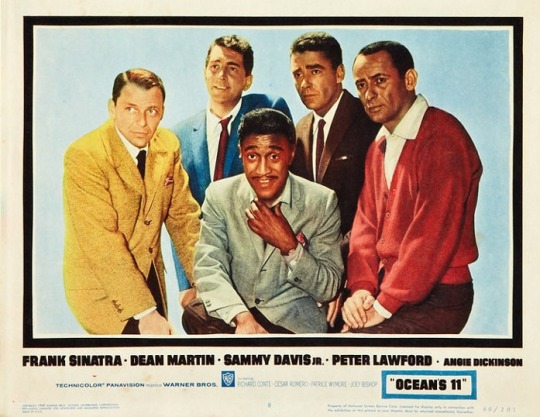
View On WordPress
0 notes
Photo

SENECA - SourcE and impact of greeNhousE gasses in AntarctiCA
A team of scientists* from Italy, New Zealand, Norway and Switzerland are collecting data in the Dry Valleys in Antarctica as part of a two-year programme to investigate the natural gas emissions in this part of the continent.
Current global climate changes represent a threat for the stability of the polar regions and may result in cascading broad impacts. Studies conducted on permafrost (ground that remains at below 0°C for two years or longer) in the Arctic regions indicate that these areas may store almost twice the carbon currently present in the atmosphere. Therefore, permafrost thawing may potentially cause a significant increase of greenhouse gas concentrations in the atmosphere, compounding the global warming effect. Although several studies have been carried out in the Arctic regions, there is a paucity of data available from the Southern Hemisphere. The SENECA project aims to fill this gap and to provide a first estimate of gas concentrations and emissions from permafrost and/or thawed shallow strata of the Dry Valleys in Antarctica. The Taylor and Wright Valleys represent one of the few Antarctic areas that are not covered by ice. These vast regions display frozen soil that extends over ~3,000 Km2 forming one of the most extreme deserts on Earth representing an ideal target for permafrost surveys.
The SENECA team is now investigating targeted regions of the Dry Valleys conducting a multidisciplinary field expedition. The scientists will camp for 40 days in harsh conditions collecting and analysing soil gas and water samples, measuring CO2 and CH4 flux exhalation, investigating the petrological soil properties, and acquiring geoelectrical profiles. The data obtained will be used to 1) derive a first total emission estimate for methane and carbon dioxide in this region of the Southern Polar Hemisphere, 2) locate the potential presence of geological discontinuities that can act as preferential gas release pathways, and 3) investigate the mechanisms of gas migration through the shallow sediments. These results represent a benchmark for measurements in these climate sensitive regions where little or no data are currently available.
To know more about the SENECA project and the ongoing field activities, search the link:
https://www.facebook.com/seneca.pnra35ima/
*SENECA team: Livio Ruggiero, Alessandra Sciarra, Fabio Florindo, Massimiliano Ascani (INGV), Maria Chiara Tartarello, Valentina Romano (Univ. Sapienza), Adriano Mazzini (CEED-Univ.of Oslo), Claudio Mazzoli (Univ. Padova), Gary Wilson (GNS-Otago Univ.), Bob Dagg, Jacob Anderson, Richard Hardie (Otago Univ.), Rachel Worthington (Blake Ambassador).
0 notes